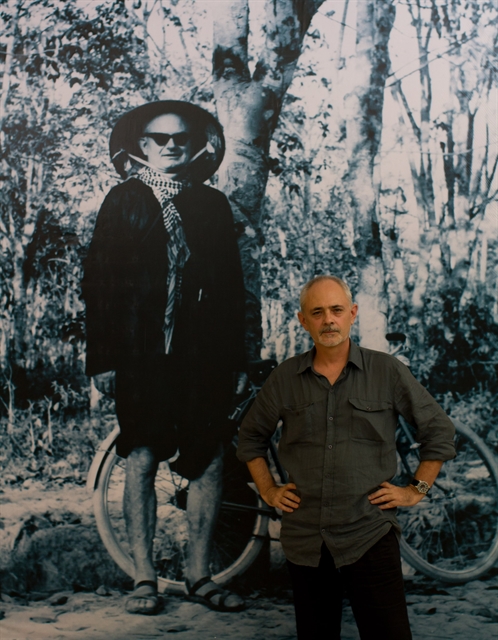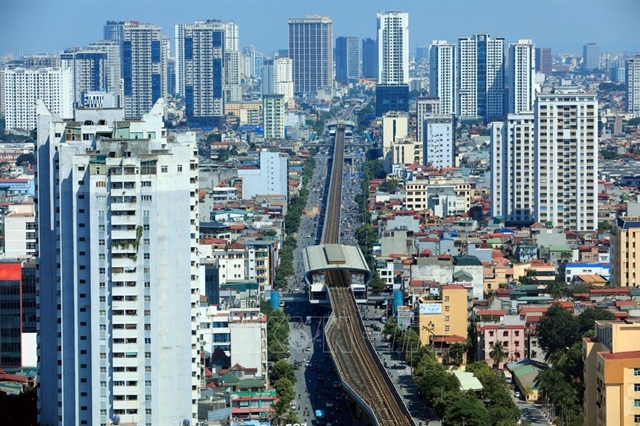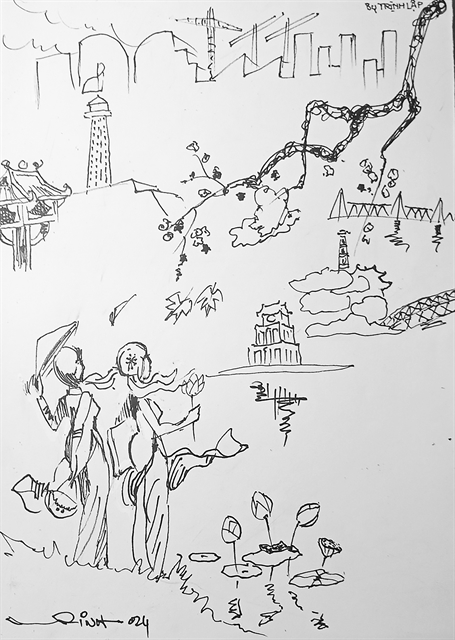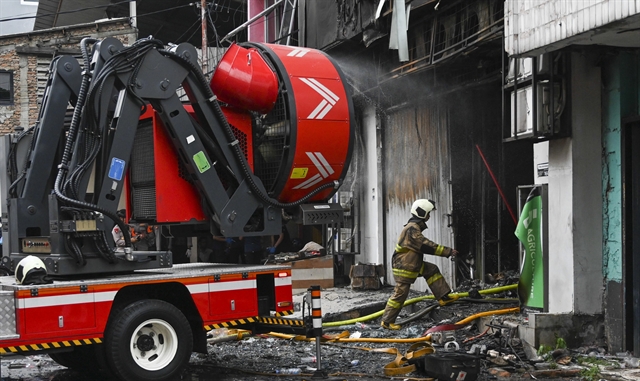 Life & Style
Life & Style

 |
| Illustration by Trịnh Lập |
by Nguyễn Mỹ Hà
Hà Nội this week celebrates 70 years since its liberation from French rule. Back then, the city was divided into distinct areas: the Guild Quarter, now known as the Old Quarter, and the French Quarter, home to government buildings, hospitals, schools, and villas of the upper class.
The remnants of the Forbidden City, once home to the Lý, Trần, and Lê dynasties since 1010, had largely been destroyed by internal conflicts and neglect after Huế became the Nguyễn Dynasty's capital.
In the 70 years since liberation, Hà Nội has undergone profound changes. The first 20 years were spent fighting for national reunification, a struggle that culminated in 1975 with the fall of the Sài Gòn regime.
Hà Nội endured successive bombings in 1972 by US B-52s, which destroyed a number of major public works, including sections of the Long Biên Bridge, a symbol of Hà Nội's resilience.
Following the war, the next decade brought economic hardship, as the country faced US sanctions and struggled under a centralised economy. The restrictive policies stifled innovation and productivity, but everything began to change with the Đổi Mới (Renewal) drive for all-round reforms launched by the 6th Communist Party Congress in 1986. Over the past 40 years, these reforms have transformed the city in many ways.
Today, Hà Nội boasts modern infrastructure, including seven new bridges that span the Red River alongside the historic Long Biên Bridge. The city has expanded from four inner districts to 30, merging with surrounding neighbourhoods as its population grows. Yet despite its expansion and modernisation, something fundamental remains unchanged about the spirit and lifestyle of Hà Nội’s people.
Hanoians continue to cherish a sense of community, often visiting the same local wet markets, grocery stores, and food vendors. These relationships form the backbone of life in the city.
The neighbourhood noodle shop may only serve breakfast, while the local coffee vendor knows your preferences and prepares your drink without any fuss. Small gestures like these are a hallmark of life in Hà Nội.
Another familiar sight in Hà Nội are the flower vendors who travel the streets on bicycles, their baskets overflowing with blooms. These wandering florists are a signature of the city, so much so that other regions replicate the “Hà Nội style” bicycle as a focal point for festivals and other events.
Yet, not everything in Hà Nội is rosy. Some shopkeepers and vendors have a reputation for their sharp tongues, a quality that can intimidate those unfamiliar with the local culture. However, once you get to know them, their bluntness makes sense—they’re often pressed for time, with many customers to serve. Over time, you come to appreciate their directness, as it reflects a practical, no-nonsense approach to life.
Hà Nội’s women are known for their strength, independence, and sharp opinions. Their assertiveness can sometimes come across as stubbornness, but this quality has earned them a reputation for being resilient and determined.
Some Hanoians still distinguish between long-standing families who have lived in the Old Quarter or French Quarter for generations and those who moved to the city after 1954, when the French had gone and the country was temporarily divided into North and South. The former often take pride in their “Hà Nội-ness”, whether in their manners or in preparing traditional dishes in the distinct Hà Nội style.
This sense of “Hà Nội-ness” can be controversial, as it sometimes feels exclusionary to those from other parts of the country. But it’s important to note that many Hà Nội residents moved to other regions—such as Sài Gòn or the Central Highlands—after 1954. These Hanoians brought their culture and traditions with them, establishing Hà Nội as an influence far beyond its borders.
Hanoians also tend to think of themselves as better educated or more refined than people from other regions. However, as the saying goes, “Even the citadel has its eccentrics, and remote lands have their extraordinary souls.” This reflects the idea that no one place has a monopoly on wisdom or culture.
In recent years, the rise of the nouveau riche has introduced a new generation of Hanoians. These individuals may flaunt luxury brands and the latest trends, but in time, they may settle into a quieter, more understated way of life. In a generation or two, Hà Nội could see a new group of residents who no longer feel the need to display their wealth but choose instead to live more simply.
Hanoians, like many northerners, are known for their frugality. Business owners focus more on investing in their products and services than on personal luxury, knowing that their customers appreciate quality and value over flashy displays of wealth.
Many people come to Hà Nội for work or education, drawn by economic opportunities. However, what makes them stay are the smaller, more personal connections they form—whether it’s the familiar face at the neighbourhood market or a kind gesture from a stranger. Hanoians may be reserved and sharp-tongued at times, but they value kindness and humanity at their core.
Ultimately, you may come to Hà Nội for practical reasons, but you stay for the warmth and small acts of kindness that make the city truly special. VNS




